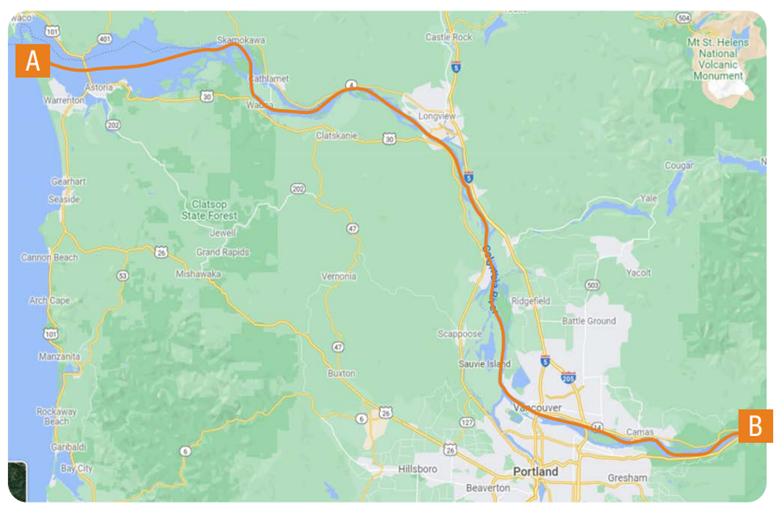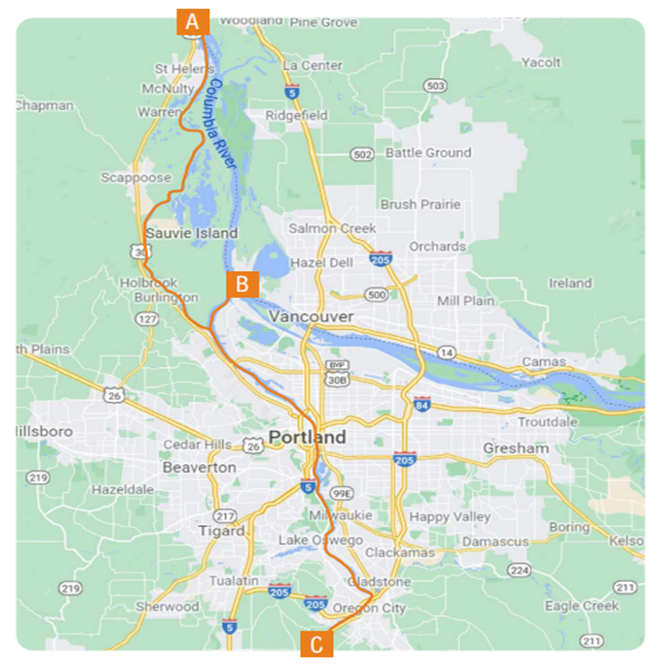|
March 10, 2022
Media contact: Jonathan Modie, 971-246-9139, phd.communications@dhsoha.state.or.us
Agency recommends limited meals for each river due to levels of PCBs in sturgeon tissue
PORTLAND, Ore. — Oregon Health Authority (OHA) is issuing recommendations on the amount of sturgeon from the lower Columbia and lower Willamette rivers that people should eat.
Fish tissue data from Oregon Department of Environmental Quality show polychlorinated biphenyls (PCBs) at levels of concern in sturgeon in these river zones. Meal recommendations are needed, according to public health officials.
PCBs in sturgeon from the lower Willamette River are much higher than PCBs in sturgeon from the lower Columbia River. This makes the calculated meal recommendations for the lower Willamette more restrictive than those calculated for the lower Columbia.
OHA issues advisories when fish or shellfish tissue data show that the levels of contaminants — in this case, PCBs — are above Oregon’s health-based screening values. OHA then calculates meal recommendations using these data to help people better understand the number of fish meals they can safely eat in one month. These meal recommendations are found in Tables 1 and 2.
Table 1: Meal recommendations for sturgeon in the lower Columbia River
|
River zone
|
Meals per month
recommended consumption rates*
|
Affected populations
|
|
Lower Columbia River:
See boundary below
|
7
|
Pregnant women, nursing mothers, children, and people 65 and older
|
|
8
|
Men, women beyond childbearing age
|
*A meal is about the size and thickness of your or your child’s hand or one ounce of uncooked fish for every 20 pounds of body weight.
The advisory boundary for the lower Columbia River extends from the mouth of the Columbia (A) upriver to Bonneville Dam (B).
 Table 2: Meal recommendations for sturgeon in the lower Willamette River
|
River zone
|
Meals per month
recommended consumption rates*
|
Affected populations
|
|
Lower Willamette River:
See boundary below
|
1
|
Pregnant women, nursing mothers, children, and people 65 and older
|
|
1
|
Men, women beyond childbearing age
|
*A meal is about the size and thickness of your or your child’s hand or one ounce of uncooked fish for every 20 pounds of body weight.
The advisory boundary for the lower Willamette River extends the entire length of Multnomah Channel and up the Willamette River from Kelly Point Park to Willamette Falls.
 Sturgeon are considered a migratory fish, but because of the rivers’ dam systems, they spend more time in these rivers, allowing the high amount of fat in their meat to accumulate PCBs. In addition, sturgeon are long-lived and suck up food from the sediment where PCBs collect. The longer a fish lives, the more PCBs they accumulate in their tissue.
Eating too many fish contaminated with PCBs can cause negative health effects over time. These health effects include damage to organs, the nervous system and the brain, leading to potential learning and behavior problems. Mothers can pass these contaminants to their babies during pregnancy or in breastmilk. Fetuses, babies and small children are most vulnerable to the health effects of PCBs.
While it is important for people to know about contaminants in sturgeon, it is equally important to continue to eat at least two meals of a variety of fish from a variety of sources each week to gain important health benefits. Fish are high in protein, low in fat and a rich source of nutrients like omega-3 fatty acids. Omega-3s provide protection from heart disease and are an important brain food for adults, children and fetuses.
As future data becomes available for sturgeon from the lower Columbia and lower Willamette rivers, OHA will evaluate and update the advisory meal allowances as needed.
When fishing in the lower Columbia River, lower Willamette River and Multnomah Channel, OHA advises fishers to visit the OHA fish advisory webpage at HealthOregon.org/fishadv for a list of other areas and water bodies with existing fish advisories and recommended meal allowances.
###
 You are subscribed to Oregon Health Authority News Releases. View all OHA news releases.
|